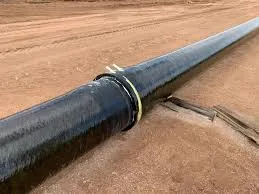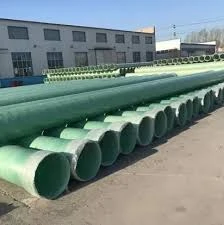
-
 Afrikaans
Afrikaans -
 Albanian
Albanian -
 Amharic
Amharic -
 Arabic
Arabic -
 Armenian
Armenian -
 Azerbaijani
Azerbaijani -
 Basque
Basque -
 Belarusian
Belarusian -
 Bengali
Bengali -
 Bosnian
Bosnian -
 Bulgarian
Bulgarian -
 Catalan
Catalan -
 Cebuano
Cebuano -
 China
China -
 China (Taiwan)
China (Taiwan) -
 Corsican
Corsican -
 Croatian
Croatian -
 Czech
Czech -
 Danish
Danish -
 Dutch
Dutch -
 English
English -
 Esperanto
Esperanto -
 Estonian
Estonian -
 Finnish
Finnish -
 French
French -
 Frisian
Frisian -
 Galician
Galician -
 Georgian
Georgian -
 German
German -
 Greek
Greek -
 Gujarati
Gujarati -
 Haitian Creole
Haitian Creole -
 hausa
hausa -
 hawaiian
hawaiian -
 Hebrew
Hebrew -
 Hindi
Hindi -
 Miao
Miao -
 Hungarian
Hungarian -
 Icelandic
Icelandic -
 igbo
igbo -
 Indonesian
Indonesian -
 irish
irish -
 Italian
Italian -
 Japanese
Japanese -
 Javanese
Javanese -
 Kannada
Kannada -
 kazakh
kazakh -
 Khmer
Khmer -
 Rwandese
Rwandese -
 Korean
Korean -
 Kurdish
Kurdish -
 Kyrgyz
Kyrgyz -
 Lao
Lao -
 Latin
Latin -
 Latvian
Latvian -
 Lithuanian
Lithuanian -
 Luxembourgish
Luxembourgish -
 Macedonian
Macedonian -
 Malgashi
Malgashi -
 Malay
Malay -
 Malayalam
Malayalam -
 Maltese
Maltese -
 Maori
Maori -
 Marathi
Marathi -
 Mongolian
Mongolian -
 Myanmar
Myanmar -
 Nepali
Nepali -
 Norwegian
Norwegian -
 Norwegian
Norwegian -
 Occitan
Occitan -
 Pashto
Pashto -
 Persian
Persian -
 Polish
Polish -
 Portuguese
Portuguese -
 Punjabi
Punjabi -
 Romanian
Romanian -
 Russian
Russian -
 Samoan
Samoan -
 Scottish Gaelic
Scottish Gaelic -
 Serbian
Serbian -
 Sesotho
Sesotho -
 Shona
Shona -
 Sindhi
Sindhi -
 Sinhala
Sinhala -
 Slovak
Slovak -
 Slovenian
Slovenian -
 Somali
Somali -
 Spanish
Spanish -
 Sundanese
Sundanese -
 Swahili
Swahili -
 Swedish
Swedish -
 Tagalog
Tagalog -
 Tajik
Tajik -
 Tamil
Tamil -
 Tatar
Tatar -
 Telugu
Telugu -
 Thai
Thai -
 Turkish
Turkish -
 Turkmen
Turkmen -
 Ukrainian
Ukrainian -
 Urdu
Urdu -
 Uighur
Uighur -
 Uzbek
Uzbek -
 Vietnamese
Vietnamese -
 Welsh
Welsh -
 Bantu
Bantu -
 Yiddish
Yiddish -
 Yoruba
Yoruba -
 Zulu
Zulu
Jan . 16, 2025 05:16
Back to list
Covers
Navigating the realm of industrial piping solutions, FRP (Fiber Reinforced Plastic) pipes and fittings stand out as a robust alternative to traditional materials. Over the years, they have gained traction in various sectors, thanks to their unique properties which combine durability with cost-effectiveness. Here, we delve into why FRP pipes and fittings have become indispensable for many industries, offering insight from both technical expertise and practical experience.
From a project management perspective, the modularity and customization potential of FRP fittings offer engineers the flexibility to design systems tailored to specific operational requirements. The adaptability of these fittings reduces installation times and enhances project agility, an aspect that our seasoned experts in the field highly value when managing large-scale industrial installations. Furthermore, the environmental impact of utilizing FRP pipes and fittings cannot be overlooked. Given the growing emphasis on sustainable practices, industries are increasingly turning to materials that offer long lifespans and minimize ecological footprints. FRP products, with their extended durability and reduced need for repairs or replacements, contribute positively to these sustainability goals. In conclusion, choosing FRP pipes and fittings is a strategic decision driven by their unmatched technical advantages and demonstrated reliability across various high-demand scenarios. For engineers and decision-makers seeking solutions that provide long-term value and adaptability, FRP emerges as a steadfast choice, supported by both empirical evidence and expertise. The trustworthiness and reliability of FRP in critical applications underscore its status as a cornerstone material in modern industry.


From a project management perspective, the modularity and customization potential of FRP fittings offer engineers the flexibility to design systems tailored to specific operational requirements. The adaptability of these fittings reduces installation times and enhances project agility, an aspect that our seasoned experts in the field highly value when managing large-scale industrial installations. Furthermore, the environmental impact of utilizing FRP pipes and fittings cannot be overlooked. Given the growing emphasis on sustainable practices, industries are increasingly turning to materials that offer long lifespans and minimize ecological footprints. FRP products, with their extended durability and reduced need for repairs or replacements, contribute positively to these sustainability goals. In conclusion, choosing FRP pipes and fittings is a strategic decision driven by their unmatched technical advantages and demonstrated reliability across various high-demand scenarios. For engineers and decision-makers seeking solutions that provide long-term value and adaptability, FRP emerges as a steadfast choice, supported by both empirical evidence and expertise. The trustworthiness and reliability of FRP in critical applications underscore its status as a cornerstone material in modern industry.
Next:
Related Products









